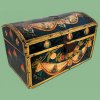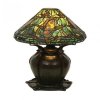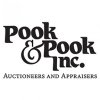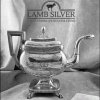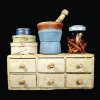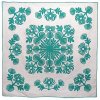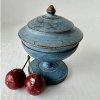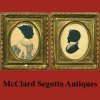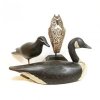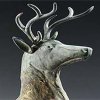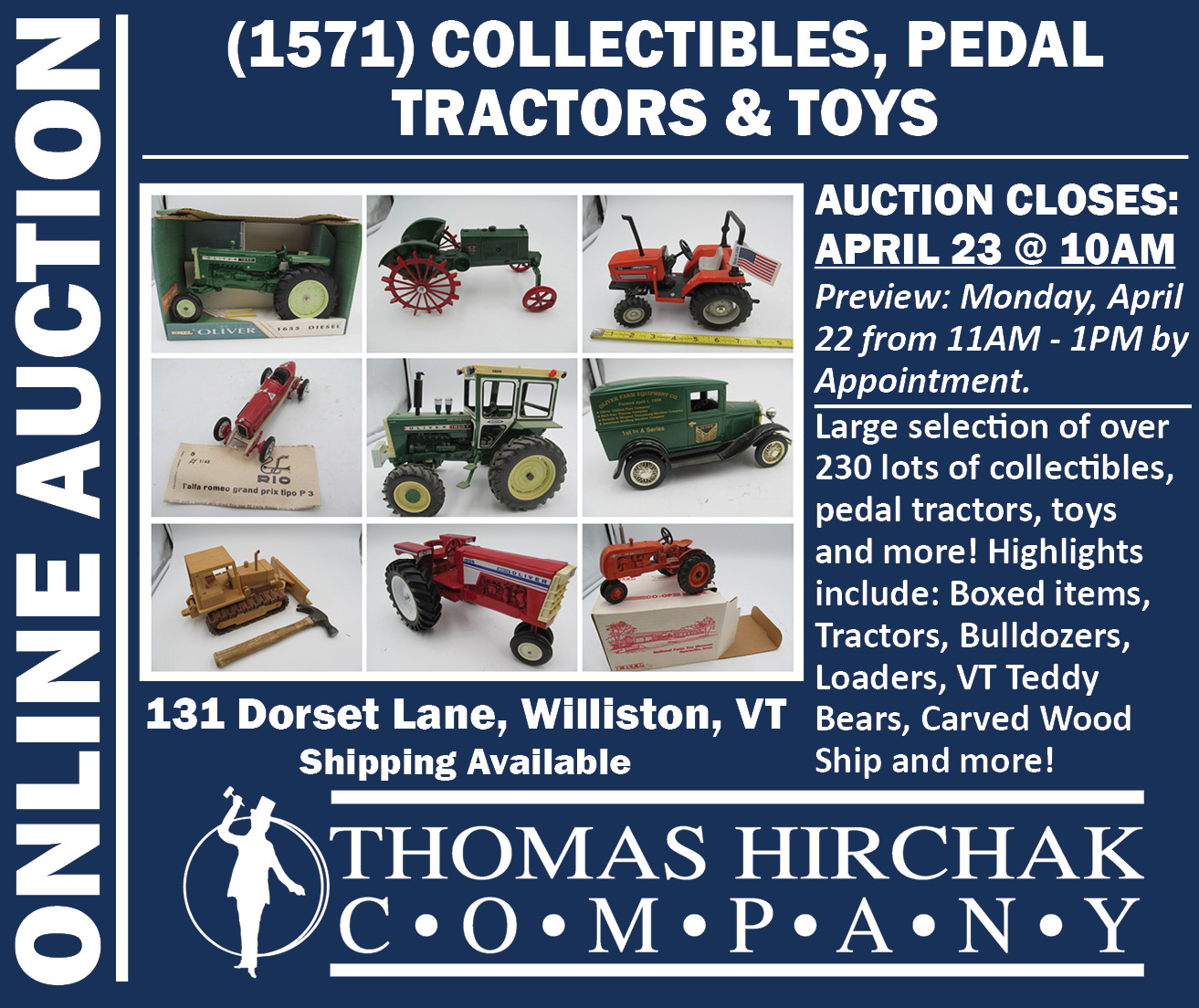The Philadelphia Antiques & Art Show 2016
April 17th, 2016
Philadelphia, Pennsylvania
The Philadelphia Antiques & Art Show was up and running April 14 through 17 and much improved after two years of rehabilitation. Show managers Diana Bittel and Karen and Ralph DiSaia were the doctors in charge of this fund-raiser for Penn Medicine, and they prescribed a new regimen that resulted in full recovery.
A purpose-built tent without any tent poles and with carpeted aisles erected on the parade grounds in front of the Marine barracks at the Navy Yard in Philadelphia was the new venue. The show had valet parking, and plenty of free self-parking nearby, a Marriott Courtyard Inn within walking distance, really good food and drink, elegant port-a-johns, perfect weather, an over-subscribed preview party, a decent gate, and spacious stands for 58 dealers. The dealers showed first-rate furniture, paintings of all sizes and periods (mostly American), prints and maps, garden sculpture and urns, folk art, a lot of fraktur, some swords and rifles, silver, pewter, quilts and needlework, jewelry, ceramics, rugs, and flags. The show was full of major and minor discoveries.

The Philadelphia Antiques & Art Show was held in a purpose-built tent that cost a quarter as much as the walls at the Pennsylvania Convention Center and created a big space without poles, providing spacious stands for 58 dealers.
“Now we’ve got a show to build on,” said Skip Chalfant of West Chester, Pennsylvania, a dealer and longtime exhibitor.
The Philadelphia show is back on track. Like any patient who had been out of circulation for a year, the show seemed to be full of new energy at the preview party and a bit tired at the end of the show, when it began taking stock of how well it had held up.

Schwarz Gallery, Philadelphia, offered this large (29¾" x 50¼") painting by Charles F.G. Witman, 1835, Thanksgiving Morning. It is signed and inscribed lower left “C. Witman / 1835 Coates St. Phila” and on the lower right “Thanksgiving Morning” and was $60,000.
Business was done. Never enough, in a recovering market, but a good amount of furniture sold, and not many paintings. Highboys, clocks, card tables, drop-leaf tables, small tables, chairs, and a clothes press found new homes. Many digital photographs of furniture were taken by designers and by collectors who needed to think about a major purchase. For people with some money in their jeans and a desire to live with well-designed furniture, art, and accessories from the past, there was no better place for comparison shopping. The 22 dealers who also show at the New York Winter Antiques Show brought some things that had failed to sell during the blizzard in January, and those who did not show in New York City brought the best they could muster. At no other show in America is the quality and variety of Americana for sale any better.

Circa 1800 China trade tea wares with the initials of Nicholas Brown Jr. of Providence, Rhode Island, were offered by Polly Latham Asian Art, Boston, Massachusetts. The teapot and stand were $6500, and they sold, as did several cups and saucers. The Brown family’s philanthropy resulted in Rhode Island College’s becoming Brown University.
Museums did some buying, and so did collectors. Dealers bought from each other and then sold to special clients who did not make it to the show. Overall, selling was spotty; not everyone had a brilliant show, but some did, and nearly everybody sold something. There is indeed a marketplace for Americana, perhaps smaller than a generation ago but no less passionate. Prices were down from the bubble years of the 1990s and in some cases half of a decade ago but still not down enough for modest budgets, though deals could be made. For those not buying, there was much pleasure in looking at well-designed objects or paintings that make us see what we did not know existed and take us back to another time. It was hard to walk into any stand and not see something that demanded a second look.

This cast-iron urn, marked by William Adams at 960 North 9th Street, Philadelphia, is one of a pair, priced at $26,500 for the pair. A smaller pair of urns (not shown) also by Adams, painted white, was $16,500 from Francis J. Purcell of Philadelphia, Pennsylvania.

This Canton umbrella stand, a very rare form, was $16,000 from the Mellins of Mellin’s Antiques, Redding, Connecticut. Gail Mellin said the taller stands are cane stands and the shorter ones are umbrella stands. The Mellins said they sold Canton to a young couple in their 30s.
The loan show of objects that dealers brought from their own personal collections (and not for sale) ranged from Mark Allen’s blue-dash Delft charger painted with large pomegranates (excavated at Rembrandt’s privy pit in Amsterdam and glued back together) to Marcy Burns’s Hopi jar, a masterpiece by Nampeyo, the most famous of the Pueblo potters. People looked at the loan show and read the short explanations that were also reprinted in the show catalog.
 The loan show was part of an attempt to get people to understand the enormous pleasures of collecting. The same goal was the aim of the Friday afternoon panel discussion led by Johanna McBrien, founding editor of Antiques and Fine Art magazine. It was called “Why Should We Care? The Passion Behind Collecting and Why Objects Matter.” Collectors Bruce Perkins, Robert Booth, Joan Johnson, and John Smiroldo, and dealers Richard Rossello and James Kilvington talked from the heart about the fun of the hunt and the pleasures of owning and living with art and antiques.
The loan show was part of an attempt to get people to understand the enormous pleasures of collecting. The same goal was the aim of the Friday afternoon panel discussion led by Johanna McBrien, founding editor of Antiques and Fine Art magazine. It was called “Why Should We Care? The Passion Behind Collecting and Why Objects Matter.” Collectors Bruce Perkins, Robert Booth, Joan Johnson, and John Smiroldo, and dealers Richard Rossello and James Kilvington talked from the heart about the fun of the hunt and the pleasures of owning and living with art and antiques.

Willard Leroy Metcalf (1858-1925) painted Garden of Dreams in 1908. The 24" x 23¾" oil on canvas is signed and dated lower left. It was $585,000 from Avery Galleries, Bryn Mawr, Pennsylvania.

Amy Finkel of M. Finkel & Daughter, Philadelphia, offered this 1810 Pennsylvania area sampler for $18,500.
Connecticut dealer Arthur Liverant said the 2016 show “laid the foundation for the next fifty years.”
Victor and Joan Johnson were awarded the Antiques Dealers’ Association of America Award of Merit at the Philadelphia show on Friday evening. Alexandra Kirtley of the Philadelphia Museum of Art spoke about the Johnsons’ role as collectors and donors to the museum and of their role in running the dealers’ committee and loan show at the Philadelphia Antiques Show for 38 years. Linda E. Johnson, Joan and Victor’s daughter, spoke about being a child of collectors. Both talks were short and entertaining.
For more information, call (610) 902-2109 or check the website (http://philadelphiaantiquesandartshow.com).

This vorschrift (writing sample), signed by Jonas Kriebel of Montgomery County, Pennsylvania, 1842, watercolor and ink on paper, 8½" x 13", was sold by Philip Bradley to David Schorsch as the show opened. Schorsch said he sold it to a client. The provenance was the collection of longtime collector Paul Flack, who said it was the best Schwenkfelder fraktur he had ever owned.

This rare Boston circa 1800 sewing stand, attributed to John and Thomas Seymour, is the mate to a table sold at the sale of the collection of Adolph Henry Meyer at Sotheby’s in January 1996. This 21" x 17¼" x 30¼" one had been owned by Mitchell Taradash (1889-1973) and E. Martin Wunsch (1924-2013). It was $135,000 from C.L. Prickett, Yardley, Pennsylvania.

Diana H. Bittel of Bryn Mawr, Pennsylvania, asked $21,000 for this carved and painted Noah’s ark with over 200 figures including Noah and his family, from Germany, most likely Nuremberg, circa 1870.
Originally published in the June 2016 issue of Maine Antique Digest. © 2016 Maine Antique Digest


